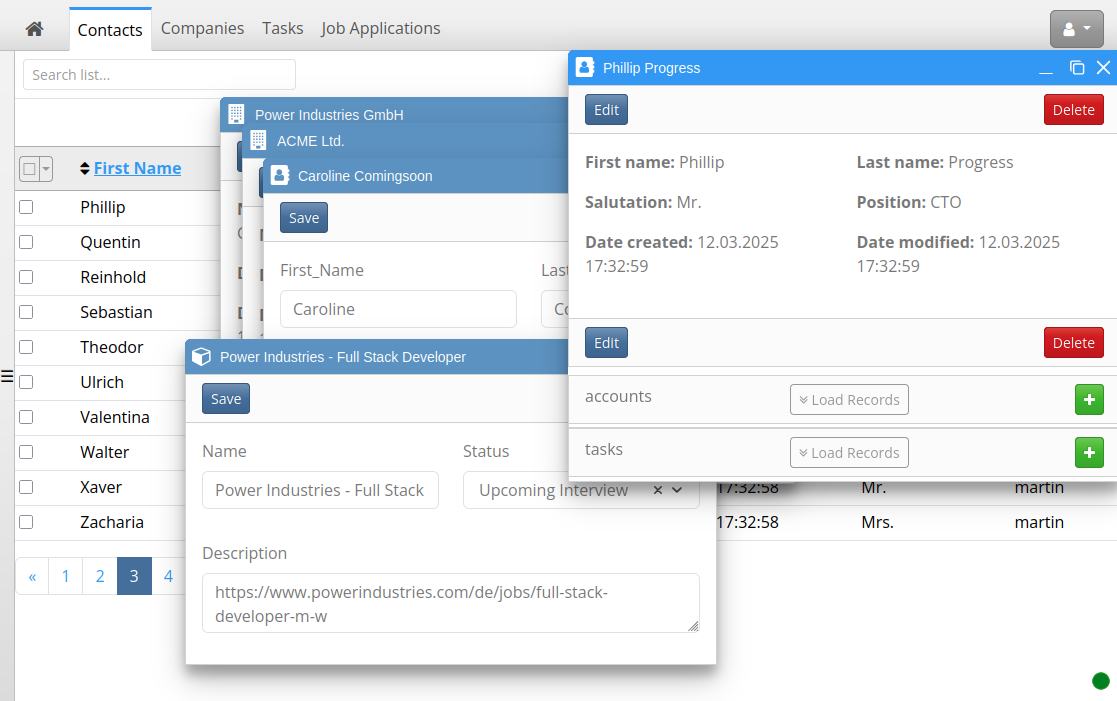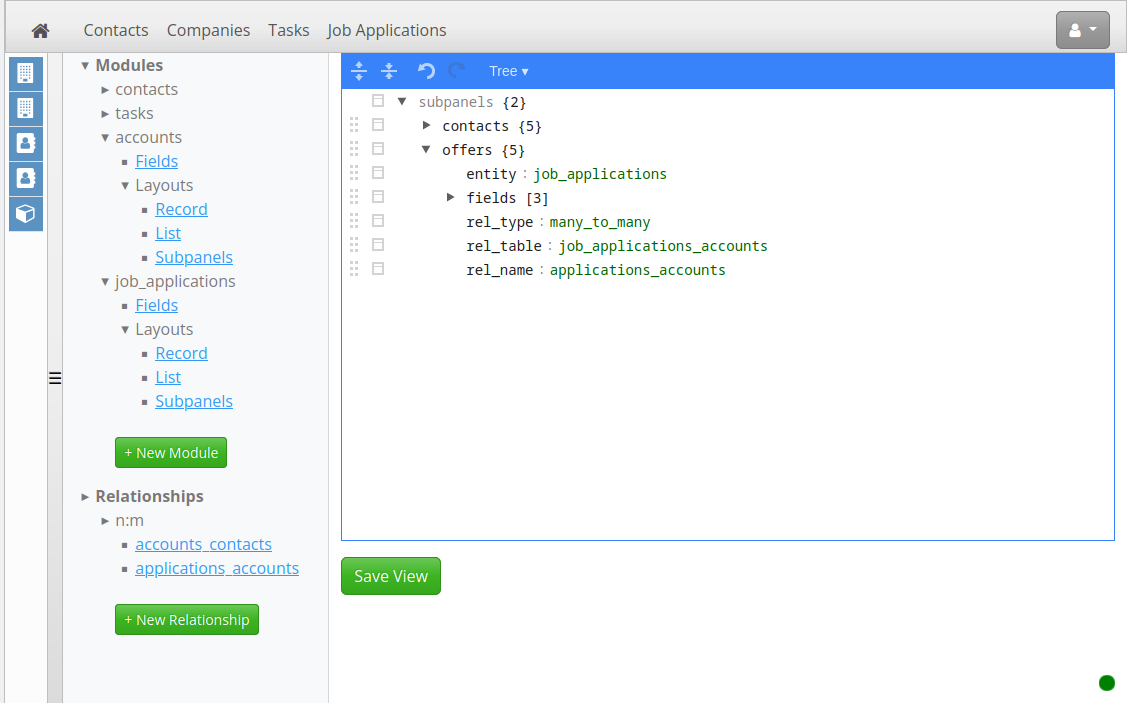Low/No-Code Application Platform with a Modular Frontend and Lightweight PHP Backend
A while ago I built a no-code/low-code application platform I developed from scratch. The project is designed to enable rapid development and customization of data-driven applications requiring users to write no or very little code. It's a full-stack solution, with a dynamic frontend powered by JavaScript and a robust backend in PHP.
Project Overview
This platform empowers users to define custom entities, relationships, and layouts through a single configuration file. Its core functionality includes:
- Dynamic entity creation via a built-in Entity Builder
- Visual configuration
- Authentication system with predefined
UsersandTokensentities - A flexible REST API supporting future mobile apps or third-party integrations
Frontend Highlights
The frontend is developed in JavaScript, leveraging several libraries for a modular and responsive UI:
- Routing:
page.jsfor seamless client-side navigation - Dropdowns & Relations:
slimselectfor managing entity relationships and select fields - Multi-window Interface:
WinBox.jsto display and edit multiple records simultaneously - Configuration Interface:
jsoneditor.jsfor visualizing and editing the entity config - Dashboards:
gridstack.jsallows drag-and-drop dashboard customization - Data Visualization:
chart.jsto create charts based on entity data - Styling & Components:
Bootstrapensures responsiveness and consistent UI/UX
The frontend is responsive and fully mobile-compatible, supporting productivity across devices.

Backend Architecture
The backend is built in PHP with a lightweight structure:
- Routing:
Flight PHPfor API routing - Templating:
Twigis used to render parts of the frontend server-side - Database: Currently uses SQLite for simplicity, but supports easy migration to MySQL or PostgreSQL
- REST API: Rest endpoints make the backend suitable for future mobile clients or external tool integrations
Configuration-Driven Development
One of the driving ideas of this project is the unified configuration file, which governs:
- Entity definitions
- Field types and relationships
- Layouts for records, lists, and subpanels
This setup allows non-developers to build custom data models without writing backend code.

Potential Use Cases
This project can be adapted for a wide range of applications, including:
- Internal tools and admin dashboards
- Personal Information Manager (PIM) tool
- Inventory and asset tracking solutions
- Lightweight ERP modules
- Data collection and reporting platforms
Missing Features
Installer
Currently, I need to manually setup the database and user. This will be the job for the installer.
Refactor code to use an ORM library
Currently I simply handcraftet some SQL statments with some glueing code to get the proto-type running. I always planned to replace this with a ORM framework down the line but did not came around doing so
Field Calculations
Often it is necessary do some calculations with the values in your record. My idea for that was using php-lua to embed a Lua interpreter into the project. But the project seems stale and not maintained anymore and the official package does not run in PHP8. There is effort from the community to revive the project, but I might need to look into a different approach.
More Field Types
Currenlty only the most basic field types are implemented, but I am looking forward to implement some more.
Custom Code and Hooks
An option to run custom code in views and via hooks
More Planned Features
- Labels and Multi Language Support
- Permissions and ACL Support
- Kanban View
- Documentation and publishing